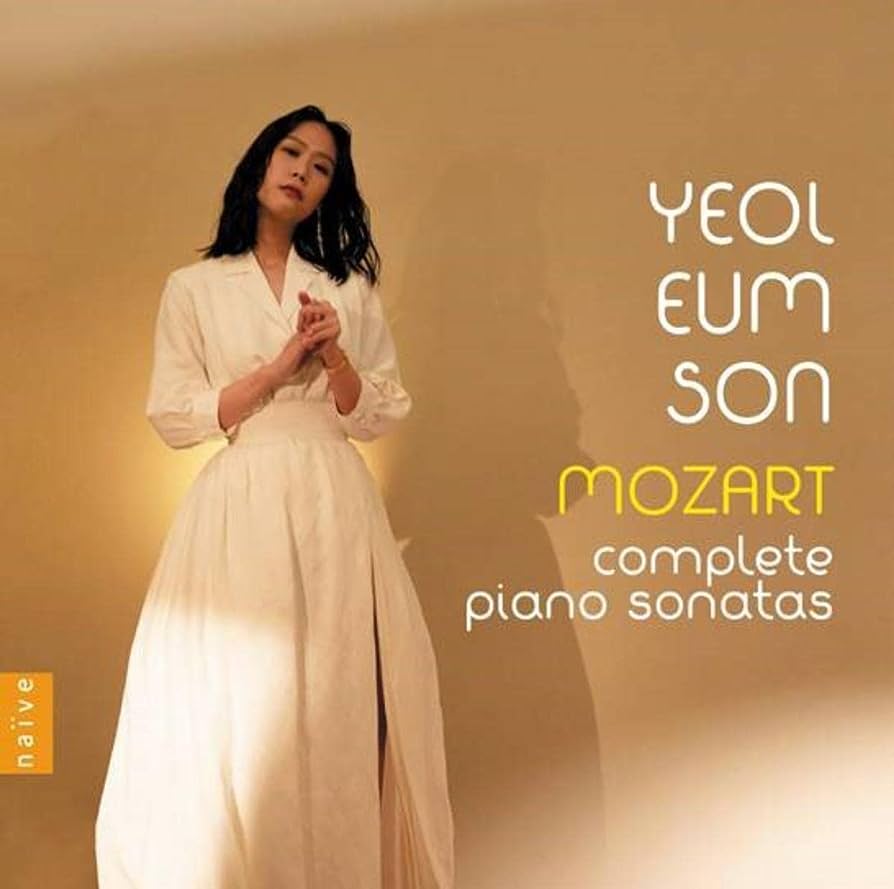MOZART COMPLETE SONATAS – YEOL EUM SON
Elegance and Precision
Mark Jordan, October 2023
Yeol Eum Son’s interpretation of Mozart’s Complete Piano Sonatas is a refined showcase of her technical prowess and innate artistry. Known for her intricate shading and diverse palette, as evidenced in her previous recordings, Son once again delivers a performance that displays her command over the keyboard and her sensitivity to the nuances of Mozart’s compositions.
From the outset, it’s clear that Son’s attention to detail and meticulous craftsmanship shape her renditions. In pieces like the F major K. 280 Allegro assai, she masterfully navigates through variations in sonority and embellishments, each note precisely articulated. The G major K. 283 Presto is imbued with a rhythmic liveliness, and the F major K. 332 Allegro assai is marked by cascading runs and a notably robust left-hand presence.
Even the seemingly straightforward “easy” pieces, such as the C major K. 545, are treated with reverence. Son’s consideration of balance between hands in the first movement’s second subject exemplifies her commitment to extracting the full depth of each composition.
Where Son truly shines is in her interpretation of slow movements. The harmonic sensitivity she brings to pieces like K. 279, K. 533/494, and K. 333 is striking, and her deft phrasing carries gracefully across barlines, creating an entrancing narrative quality.
However, not all moments of the collection receive the same level of engagement. Some finales come across as lackluster and somewhat square. Comparatively, Son’s readings of the C major K. 330 Allegretto and B-flat major K. 333 Allegretto grazioso lack the dynamic inflections found in other notable performances. Her approach contrasts with the vitality of pianists like Maria João Pires and the inventiveness seen in Roberto Prosseda and Robert Levin’s interpretations.
Son’s take on the iconic A major K. 331 Rondo alla Turca, while competent, lacks the grandeur and passion exhibited by Murray Perahia. Similarly, her calculated pauses in the D major K. 576 Allegro raise questions about their expressive intent.
It’s notable that Son opts to exclude the introductory C minor Fantasy K. 475 from the C minor K. 457 sonata, aligning with a recent trend seen in Mao Fujita’s Mozart cycle. This choice may divide listeners who appreciate the Fantasy’s emotional context within the sonata.
In a crowded field of Mozart interpretations, Yeol Eum Son’s cycle competes with well-established catalog recordings. While her performances may not eclipse the likes of other acclaimed pianists, her finest moments within this collection offer a glimpse of her musical finesse and the depth of her interpretation. Her meticulous approach, coupled with moments of emotional resonance, makes this a Mozart collection that invites both admiration and reflection.

